Who is tenor ukulele best suited for?
Due to the fact that they are longer in size, tenor ukuleles are generally used by larger players as holding them will feel more natural. Also, they are popular amongst individuals who like playing or performing solo sometimes, as it is capable of covering more frequencies and sounding much more satisfying. In general, it comes down to personal preference and your preference when it comes to tone.
Is a tenor ukulele ideal for beginners?
Since the tenor, soprano, and concert ukuleles are played the same way, then there is no major drawback to learning how to play the ukulele on a tenor model. What is more, the fact that the fretboard on the tenor ukulele is more spaced provides more comfort and makes it easier to move around. Therefore, it is widespread that newbies choose tenor models over the other types.
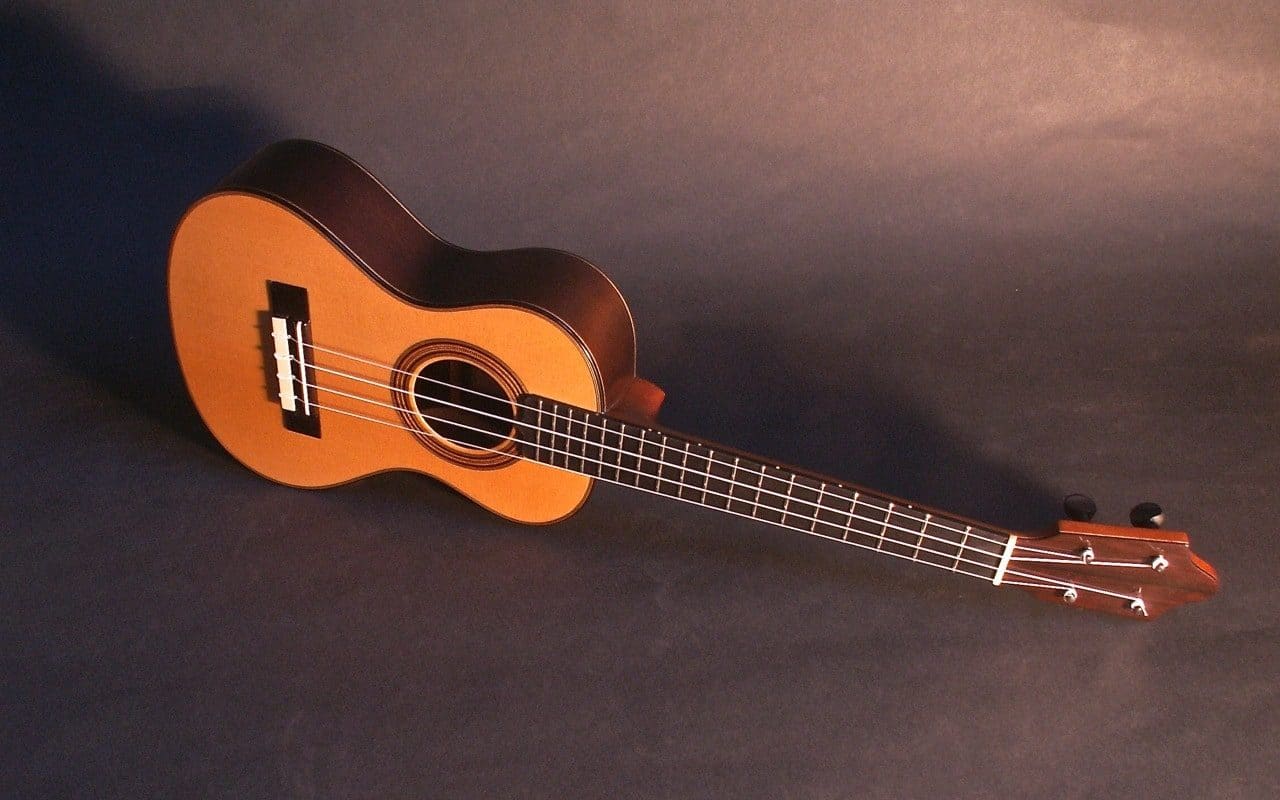
However, tenor ukuleles are costlier than other types because of the materials used, which is probably the only drawback for beginners. You can purchase a beginner-level soprano for a cheaper price than a beginner-level tenor ukulele. In addition, if you ever decide to switch to the smaller types, getting used to a smaller fretboard will take some time. Although, this is probably not a big drawback as it’s normal for some adjustments to be needed after switching from one type of ukulele to another.
Features to consider before buying a ukulele
Before buying a tenor ukulele, it is vital to know about its features and the meaning of every term. Below are the most common features alongside their explanations.
Type
Essentially, there are two primary types of ukuleles – the acoustic and the acoustic-electric ukulele. While an acoustic model depends on its own build to amplify and project its sound, an acoustic-electric model usually features an inbuilt electronic component that enables it to use an external amplifier to make its sound louder and richer.
Which one to choose totally depends on your needs and preferences. An acoustic model is considered traditional and is preferable to start with if you’ve never played a uke before. An acoustic-electric ukulele is excellent for live performances when you want every single listener to enjoy your music even if it’s a huge crowd in the street.
Construction and materials
If you want a good-sounding ukulele, then it is very important to find one produced using real wood parts. Traditional options such as spruce, Sapele, zebra wood, and mahogany help produce a warm, lovely sound. You may take a Koa wood ukulele into consideration if you want a true Hawaiian tradition, but you may need to pay more. In the event that you do this, it’s a nice idea to guard your investment and avoid wear and tear – you may want to buy a less expensive model, especially if you search for a travel ukulele or an instrument for outdoor use and long practice sessions.
Solid woods vs. laminated wood
While budget-friendly models are usually made with laminated wood, the professional and higher-end models will be produced entirely with wood. Due to the fact that it is stronger and has less susceptibility to cracking and splitting, laminated wood has an edge over all wood. The all-wood ukuleles, however, have a deeper sound that delivers a mellower and richer tone.
Fretboard
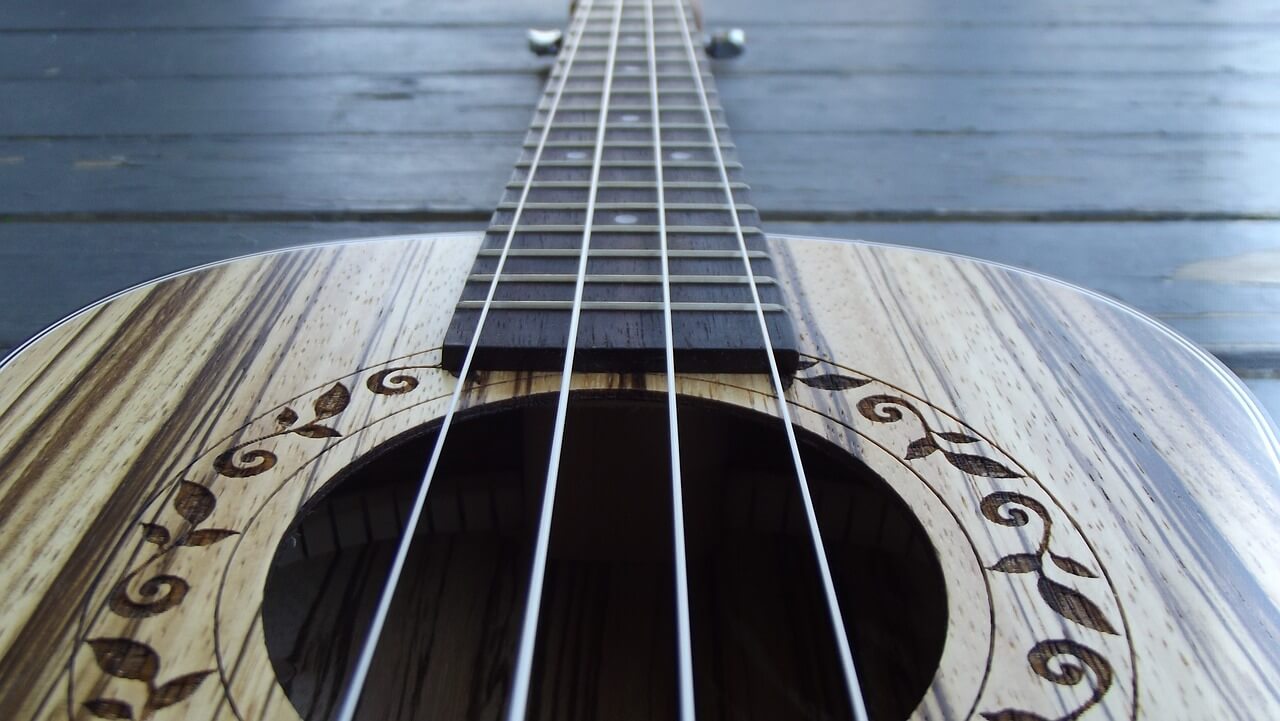 The fretboard affects the sound of the ukulele, so it is vital that you check this part of the ukulele you’re buying. One effective way of evaluating the quality of your fretboard is by checking the material with which it is made. High-quality fretboards like the one in the Ibanez UEWT5E are usually made of rosewood since it ensures the sound remains consistent and reliable. High-end ukuleles such as the Enya EUT-M6 are typically made with ebony fretboards, as it helps them to generate a fuller sound.
The fretboard affects the sound of the ukulele, so it is vital that you check this part of the ukulele you’re buying. One effective way of evaluating the quality of your fretboard is by checking the material with which it is made. High-quality fretboards like the one in the Ibanez UEWT5E are usually made of rosewood since it ensures the sound remains consistent and reliable. High-end ukuleles such as the Enya EUT-M6 are typically made with ebony fretboards, as it helps them to generate a fuller sound.
Apart from the material of the fretboards, they should have lots of fret markers as well, as it aids the playing of the tenor ukulele. While we might want a great-looking fretboard, we also require a functional one. Usually, fret markers are symbolized in different ways, and it all comes down to the makers adding their own signatory touch.
Accessories included
If you have been a ukulele player for a long time, then you probably own more than enough gig bags and cases already, and you probably don’t need extras such as online lessons and instructional DVDs. However, if you are just starting from scratch, you will value a couple of additional items to help get you started, even if they are not of the highest quality – after all, you can spend a couple of dollars later on a better hard case, a neck strap, a high-quality tuner, and some other things to raise your overall experience. Therefore, consider buying a model that comes with useful extra accessories like the Cordoba Tenor Ukulele and the Kala KA-ZCT-T.
Extra features
Apart from the obvious, there are some extra features you also need to check before spending money on a new tenor ukulele. Does it come with a money-back guarantee? What kind of design and finish does it have? These are essential questions you need to ask if you’re serious about getting the right ukulele for your needs.
How to tune your ukulele
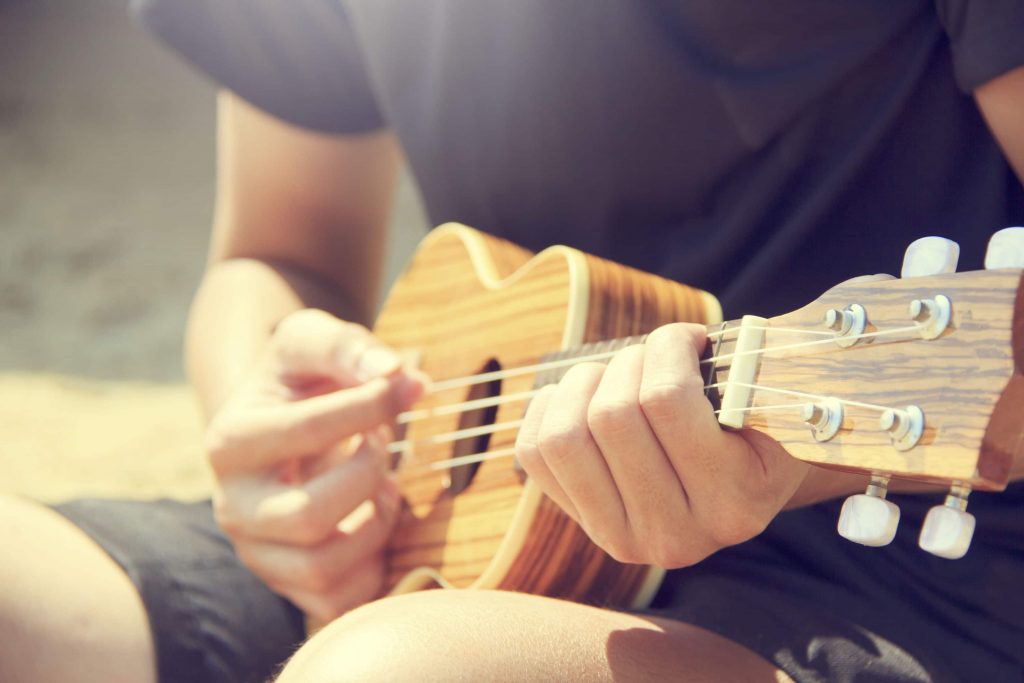 The C tuning or GCEA, as it is commonly referred to, is the most popular tuning method for the tenor ukulele. Unlike the soprano models, however, the G note here can possibly be an octave lower. Therefore, begin from the fourth string when tuning, as it is the one that will deliver the G note. You may play it on the piano and make the strings sound exactly like it.
The C tuning or GCEA, as it is commonly referred to, is the most popular tuning method for the tenor ukulele. Unlike the soprano models, however, the G note here can possibly be an octave lower. Therefore, begin from the fourth string when tuning, as it is the one that will deliver the G note. You may play it on the piano and make the strings sound exactly like it.
Afterward, press the fifth fret of the G-string and then tune down the subsequent string to the exact same sound. The outcome ought to be a C. Then, press the fourth fret on the C-string, and you’ll likely get an E, and that ought to be the next string’s sound. Lastly, press the fifth fret on the E string, and you will then get the A required for the final string.






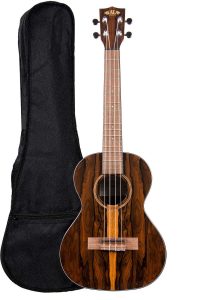
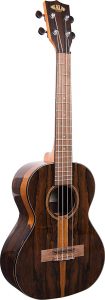
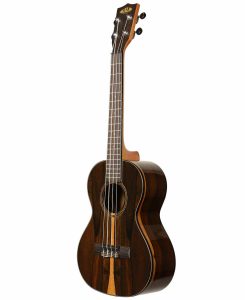


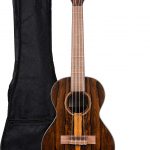
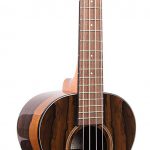
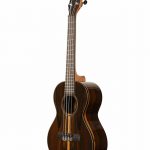
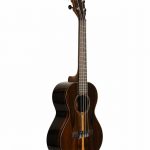
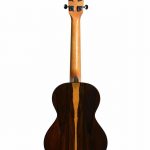
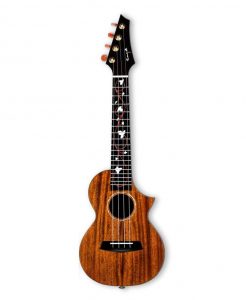
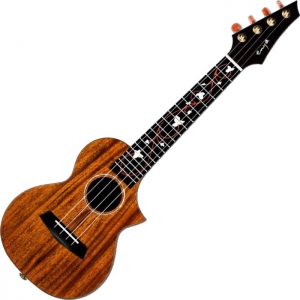
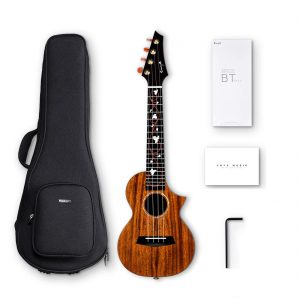
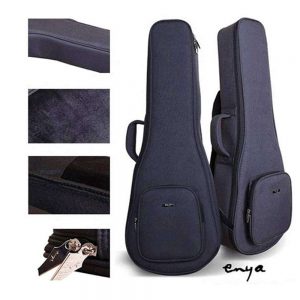
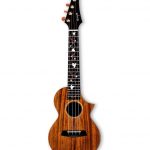
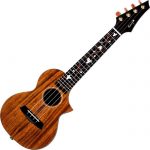
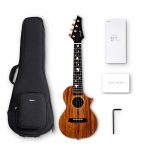
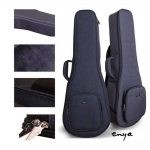
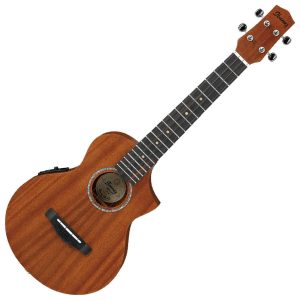
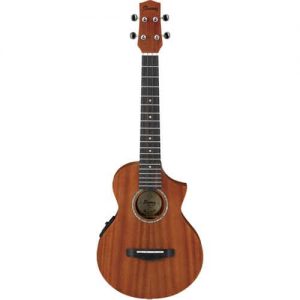
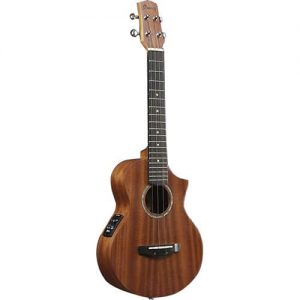
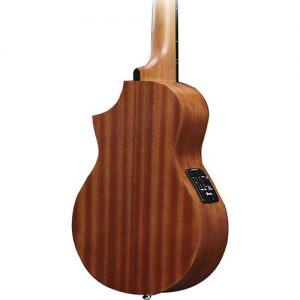
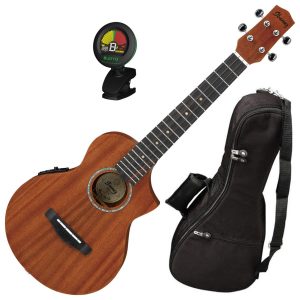
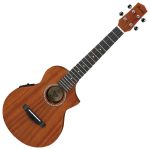
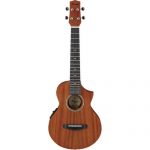
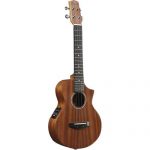
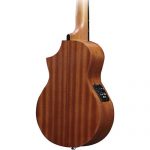
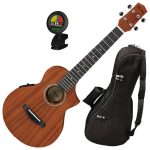
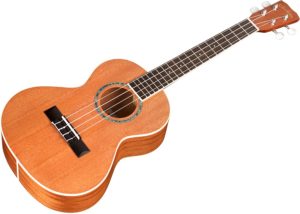
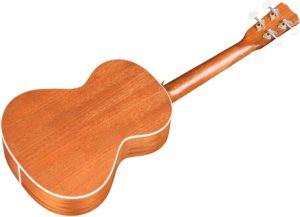
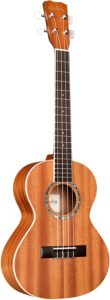

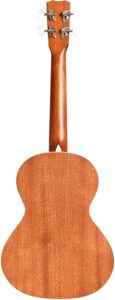
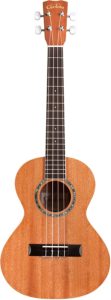
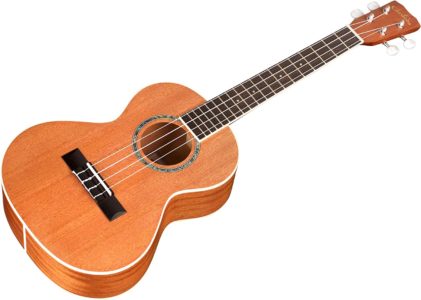
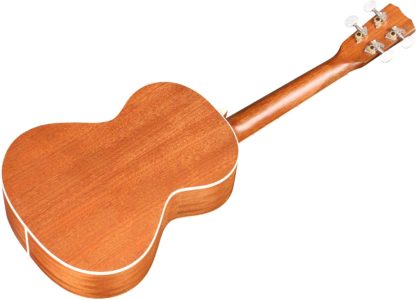

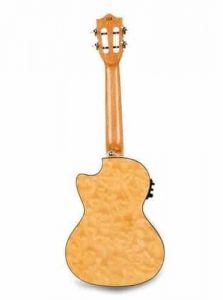
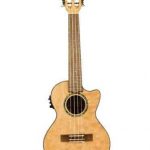
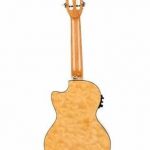
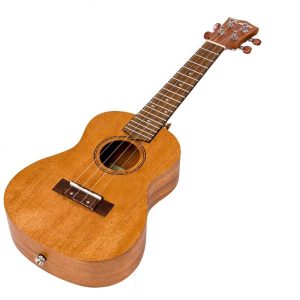
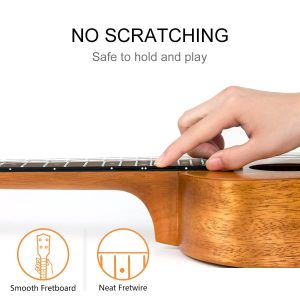

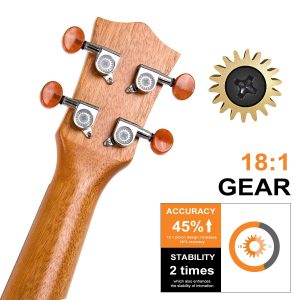
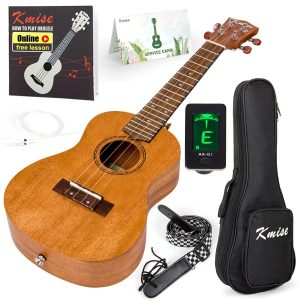


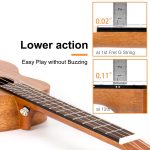
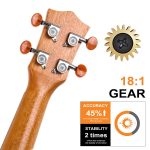
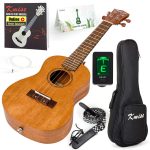

 The fretboard affects the sound of the ukulele, so it is vital that you check this part of the ukulele you’re buying. One effective way of evaluating the quality of your fretboard is by checking the material with which it is made. High-quality fretboards like the one in the
The fretboard affects the sound of the ukulele, so it is vital that you check this part of the ukulele you’re buying. One effective way of evaluating the quality of your fretboard is by checking the material with which it is made. High-quality fretboards like the one in the  The C tuning or GCEA, as it is commonly referred to, is the most popular tuning method for the tenor ukulele. Unlike the soprano models, however, the G note here can possibly be an octave lower. Therefore, begin from the fourth string when tuning, as it is the one that will deliver the G note. You may play it on the piano and make the strings sound exactly like it.
The C tuning or GCEA, as it is commonly referred to, is the most popular tuning method for the tenor ukulele. Unlike the soprano models, however, the G note here can possibly be an octave lower. Therefore, begin from the fourth string when tuning, as it is the one that will deliver the G note. You may play it on the piano and make the strings sound exactly like it.




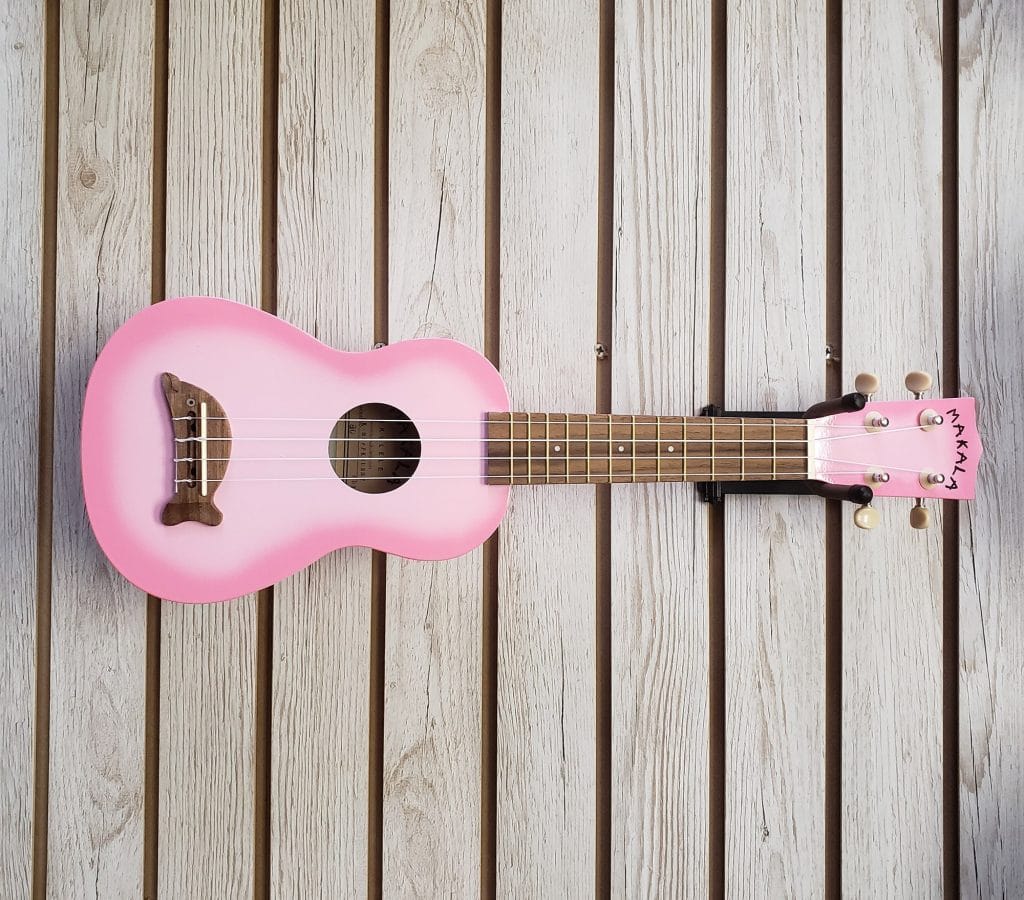

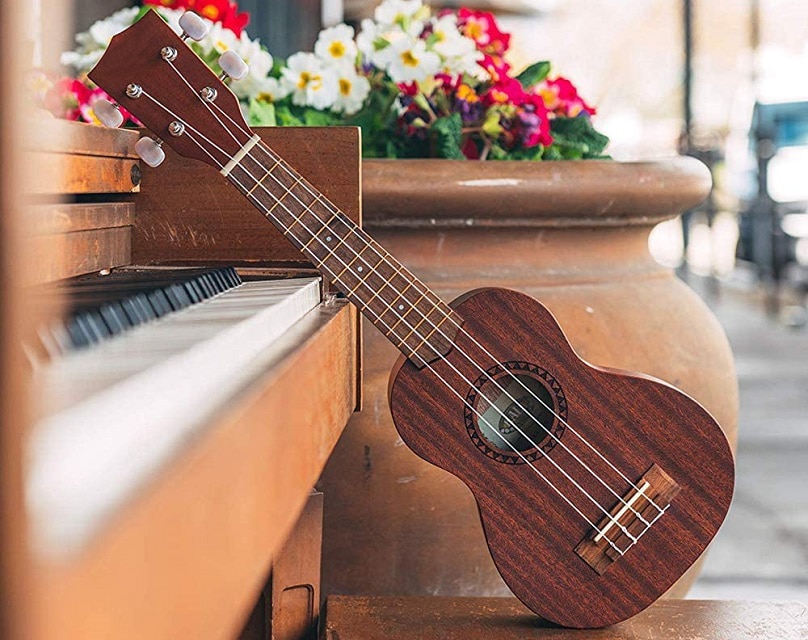



According to Lanikai, the QM-NACET model body is, in fact, laminated, whereas you claim the contrary. Please research more carefully.
Dear Lanikai,
Thank you for bringing this to my attention. I apologize for any confusion caused by my previous statement. Upon further research, I have discovered that the QM-NACET model body from Lanikai is indeed laminated. I appreciate your diligence in pointing out this discrepancy, and I will make sure to update the information accordingly. If you have any more questions or concerns, please feel free to let me know.
The article notes that an Adjusting Handle’ is a manual way to tune a ukulele.
I have never heard of a thing called an ‘adjusting handle’.
Could you please give a little more info on exactly what that is – and how it works?
Thanks for all information you could provide.
The adjusting handle, also known as a tuning peg or tuning key, is a small device located at the headstock of the ukulele. It is used to adjust the tension and pitch of each string.
To tune your ukulele using the adjusting handle, you would simply turn it clockwise or counterclockwise to tighten or loosen the string. When the string is properly tuned, the desired pitch is achieved. It’s important to note that each string on the ukulele is typically tuned to a specific note, commonly G-C-E-A from top to bottom.
I hope this clarifies what the adjusting handle is and how it works. If you have any more questions or need further assistance, feel free to ask. Happy strumming!